5.14
from Friends with Boys
Faith Erin Hicks
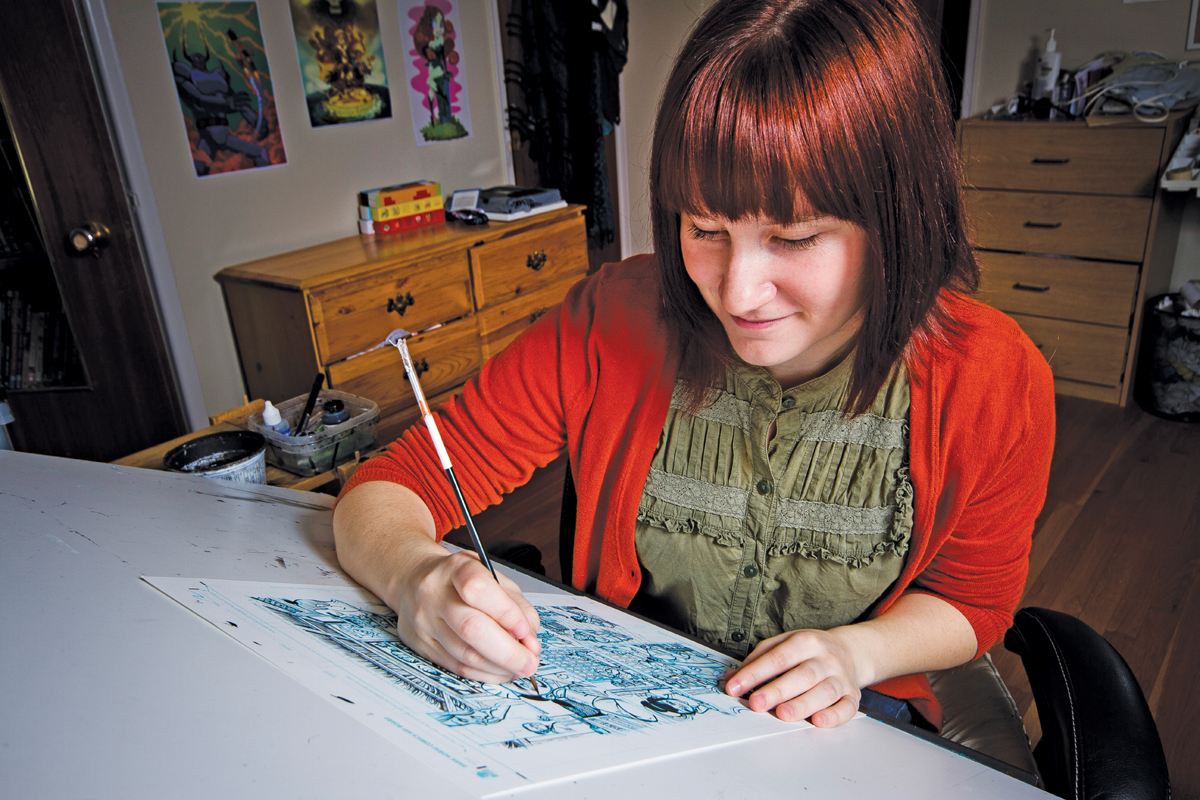
Faith Erin Hicks is an artist, writer, and animator who lives in Nova Scotia, Canada. She is most well-
KEY CONTEXT This excerpt from Hicks’s graphic novel Friends with Boys focuses on Maggie’s first days in a public school after being homeschooled for her whole life.
Characters in the comic include:
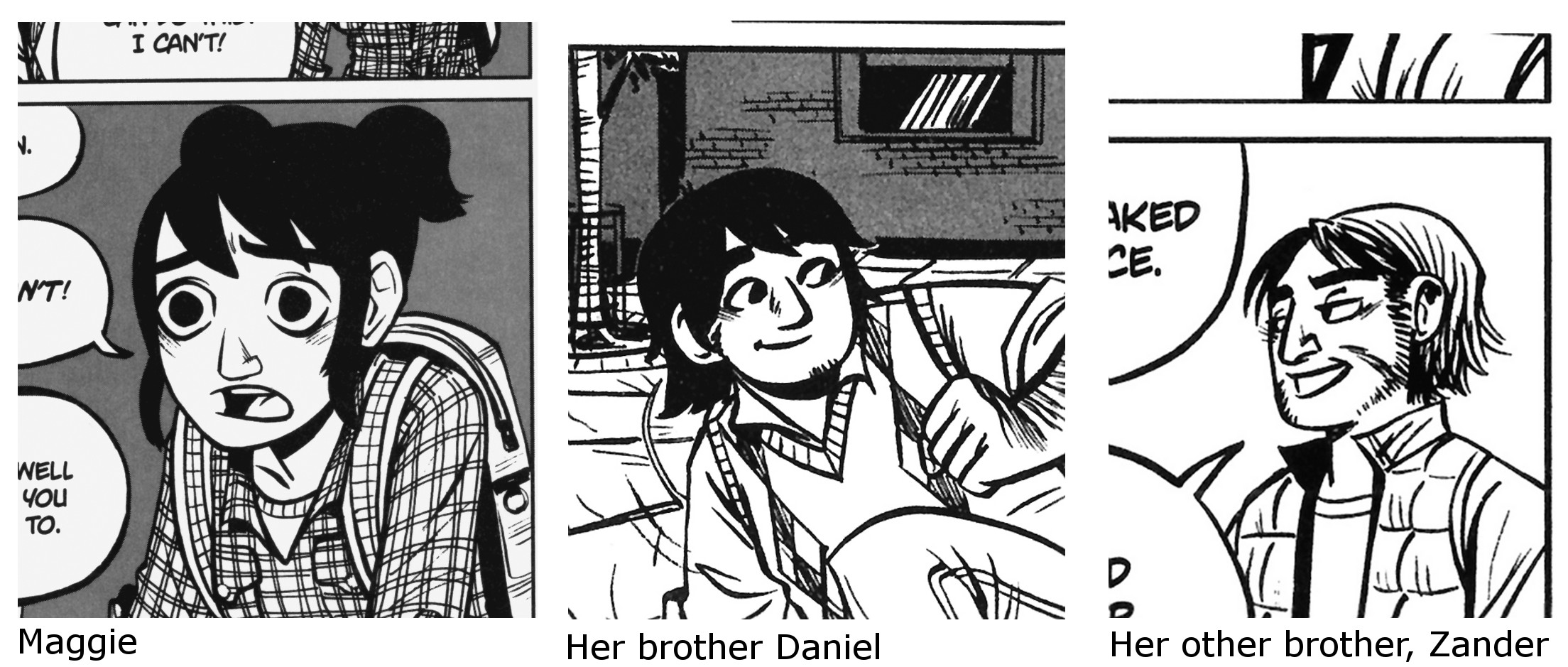
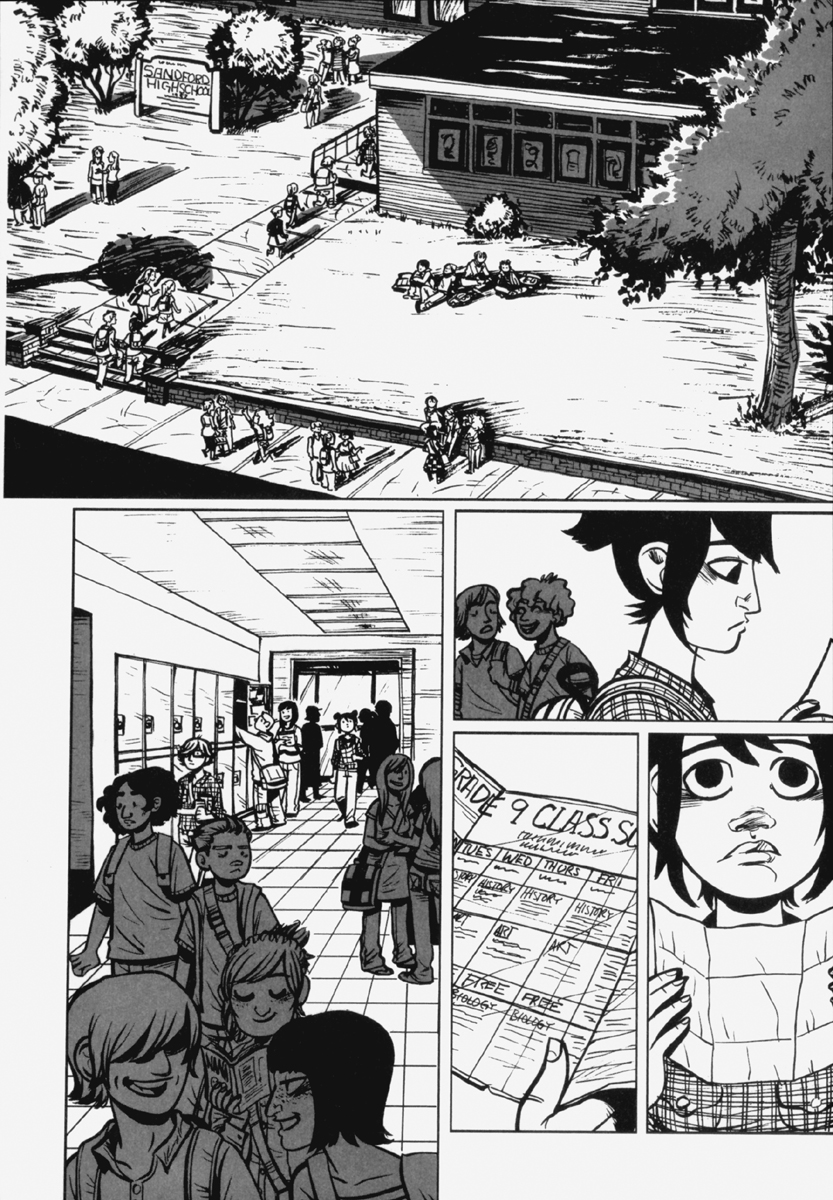

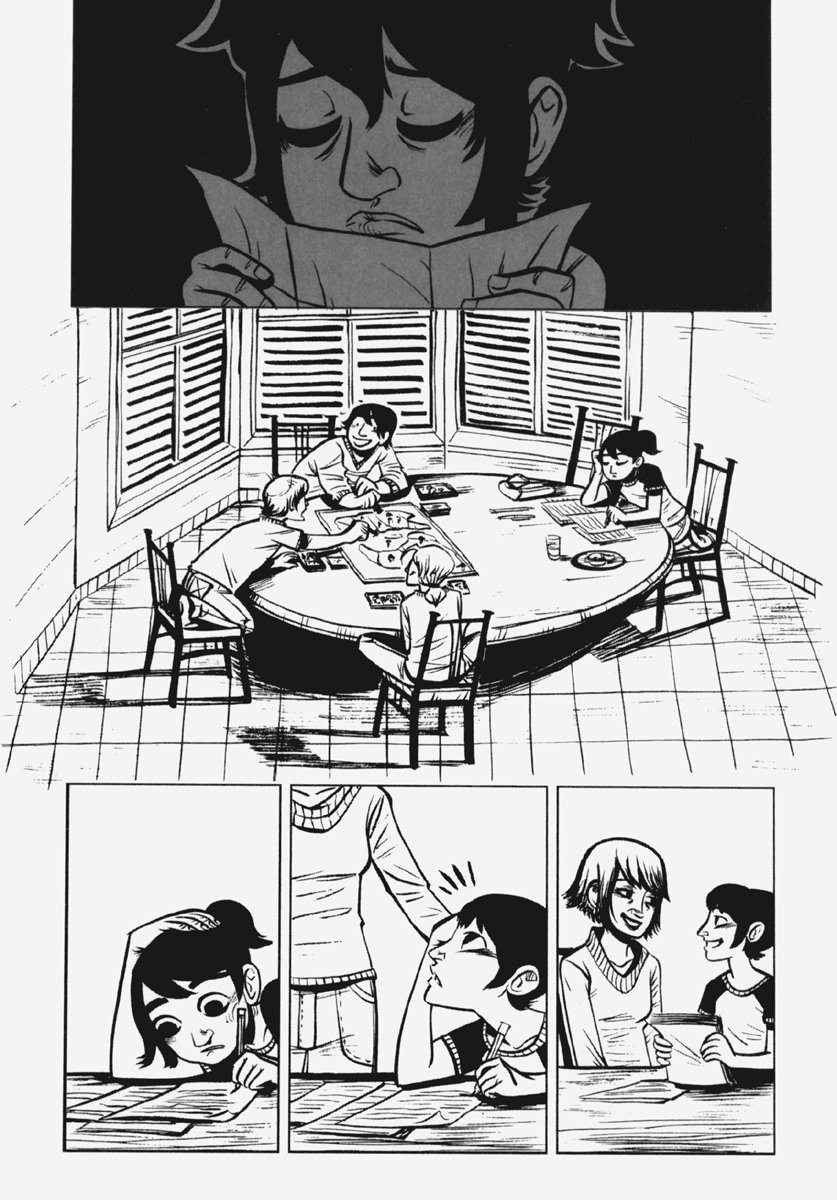
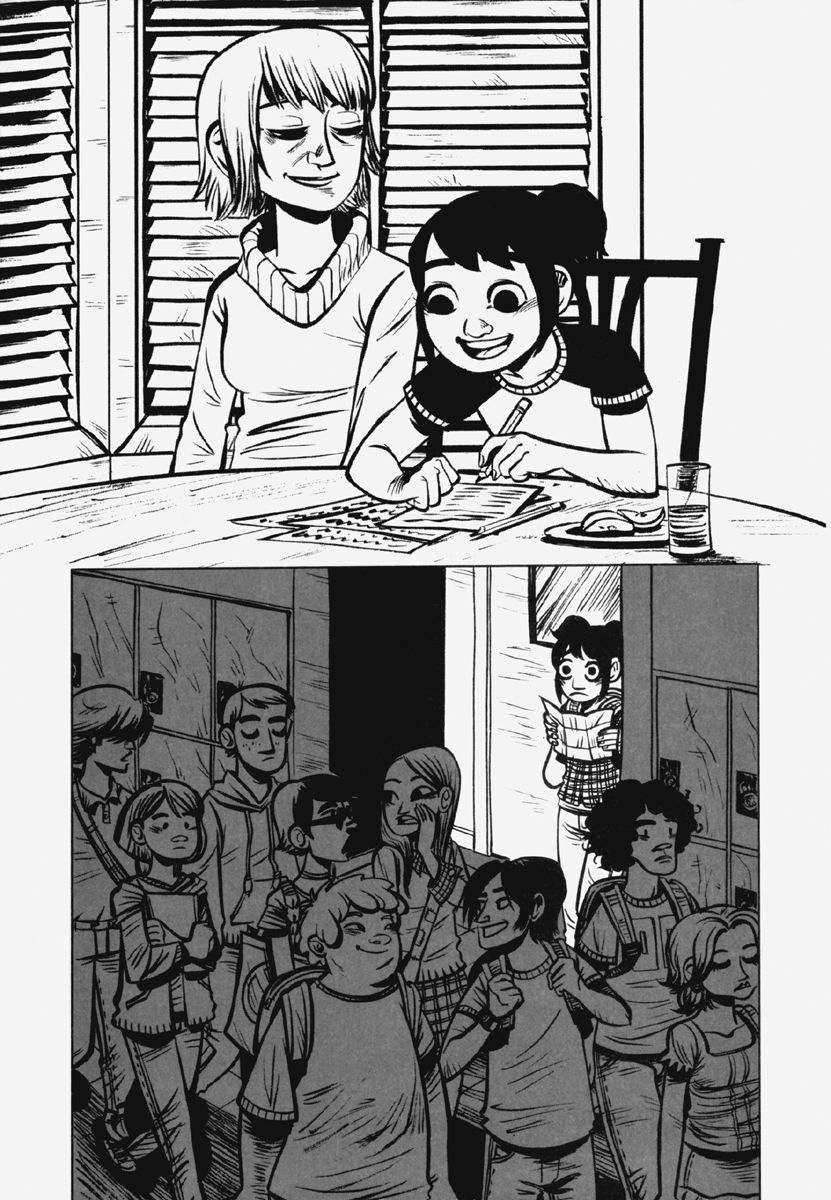

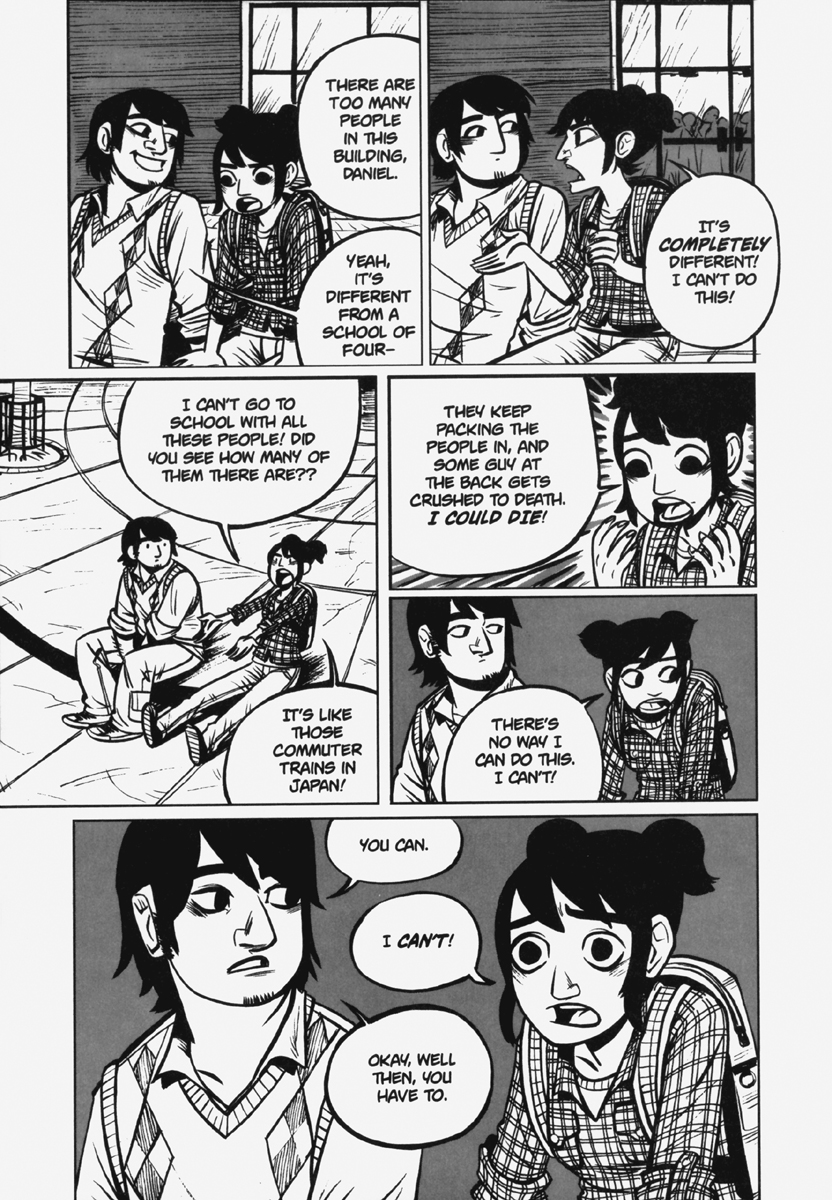
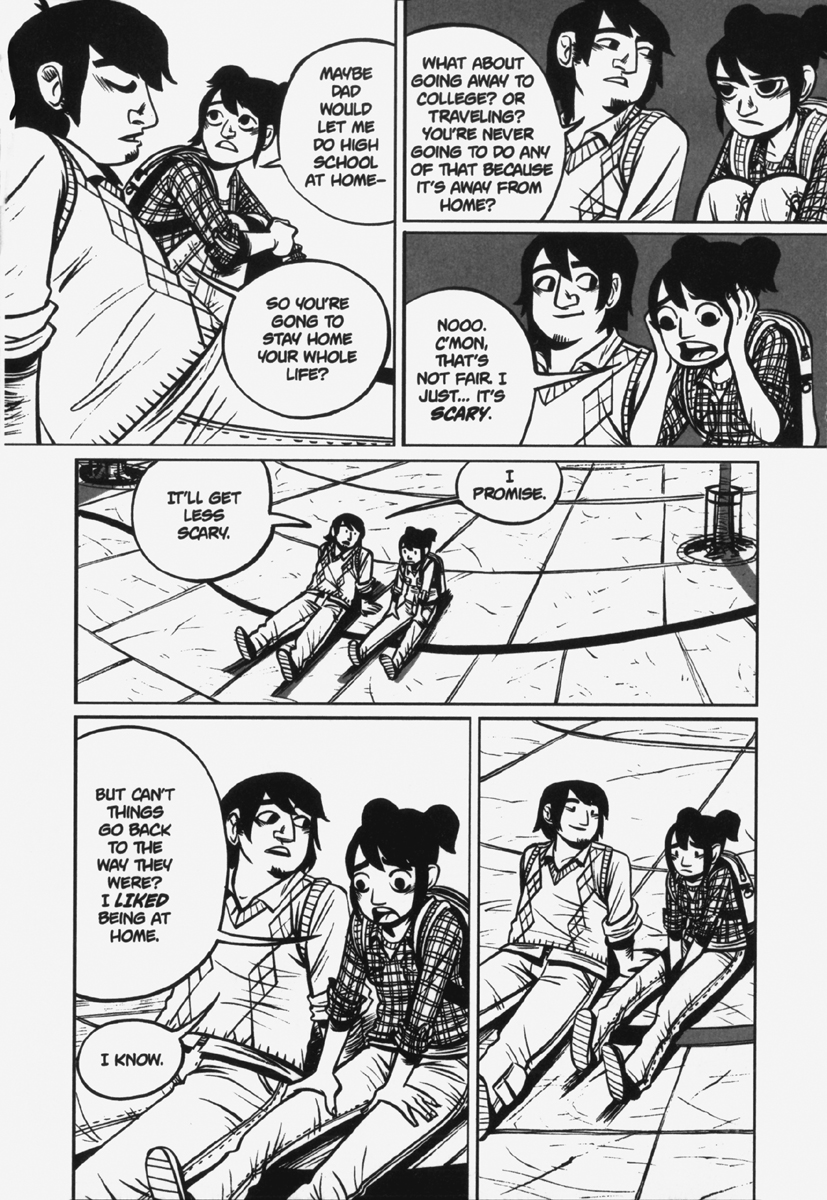



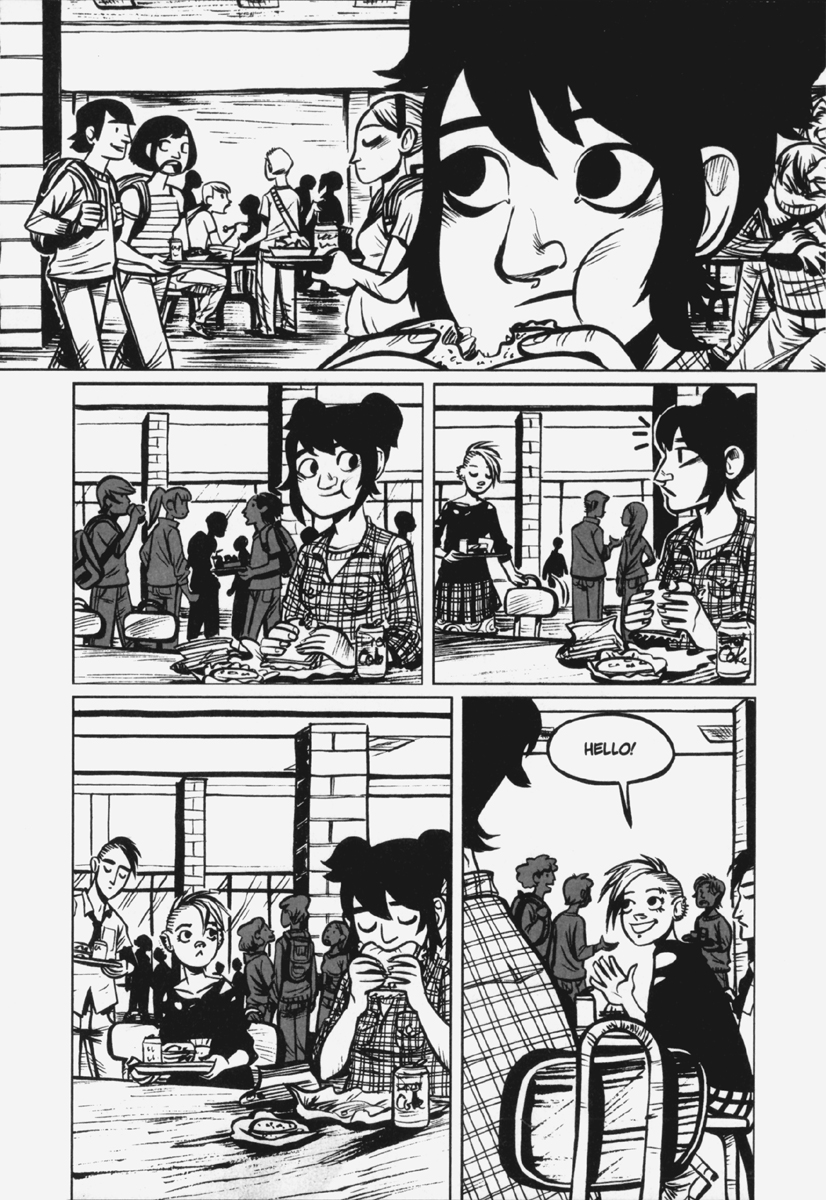
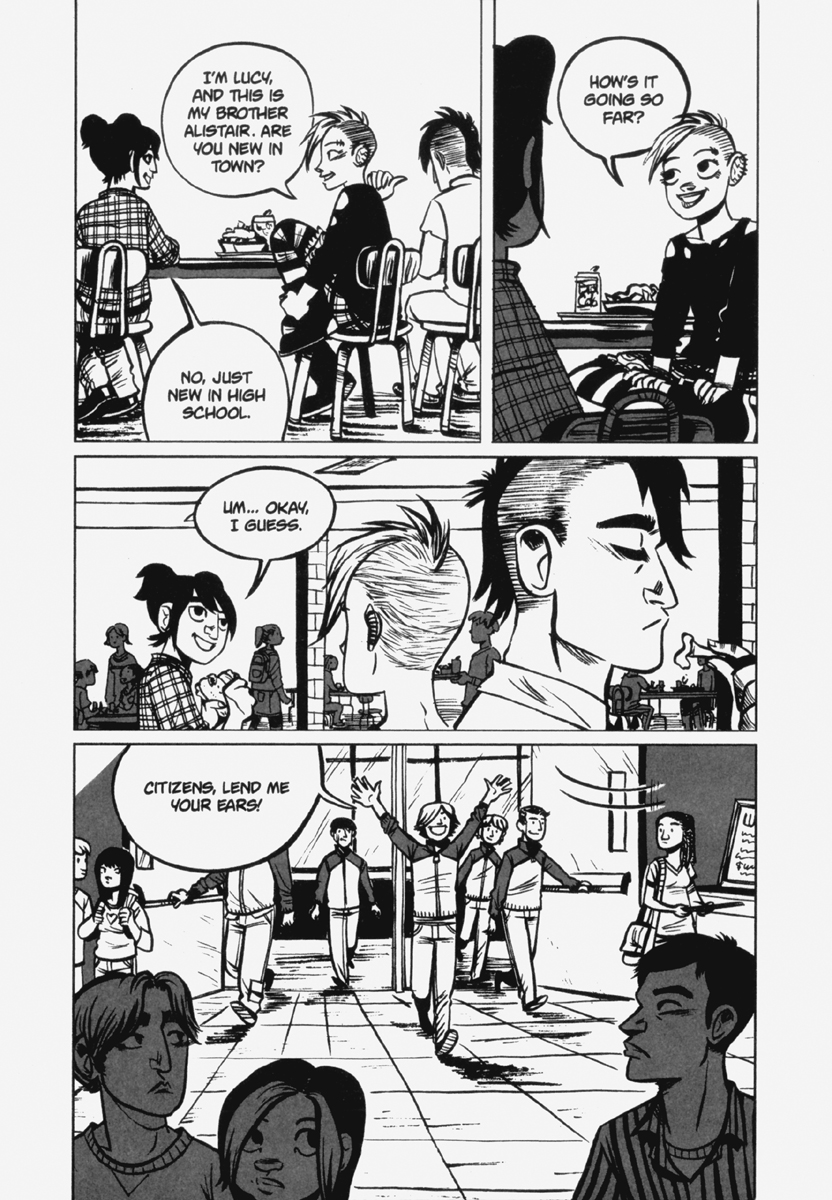
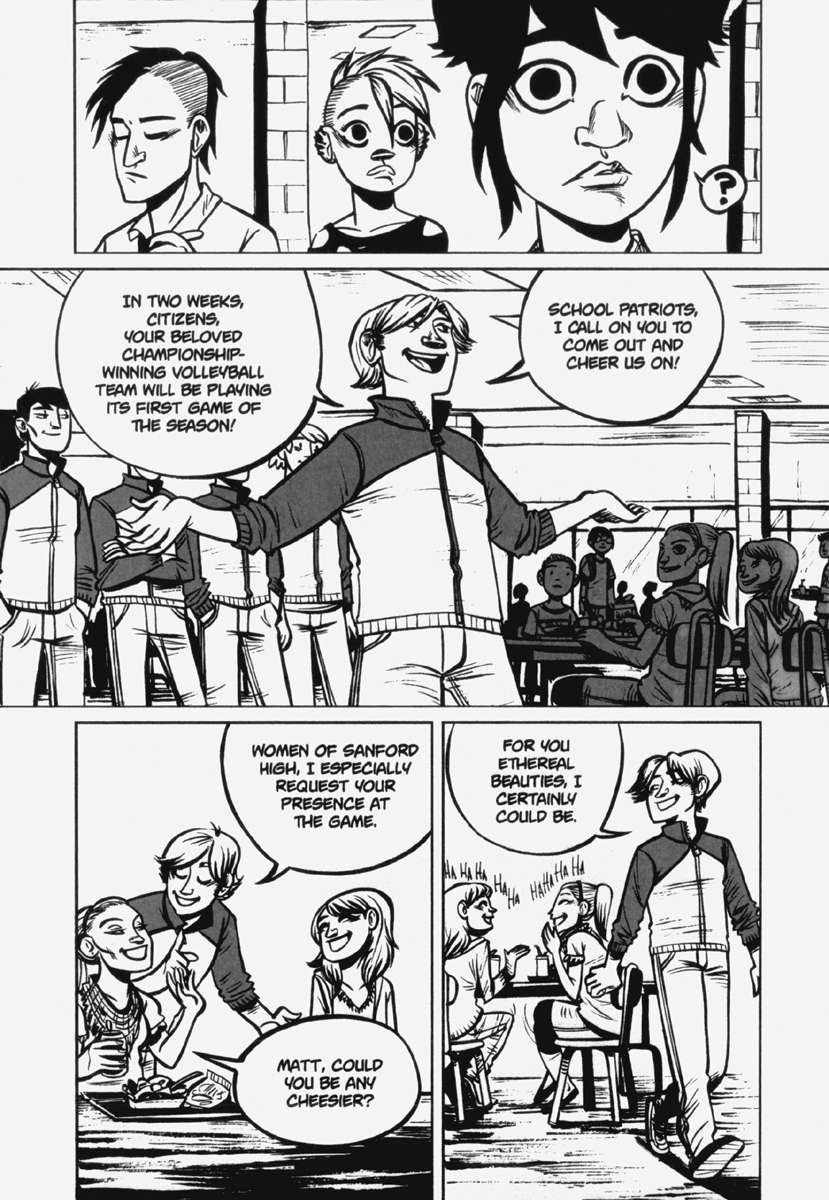

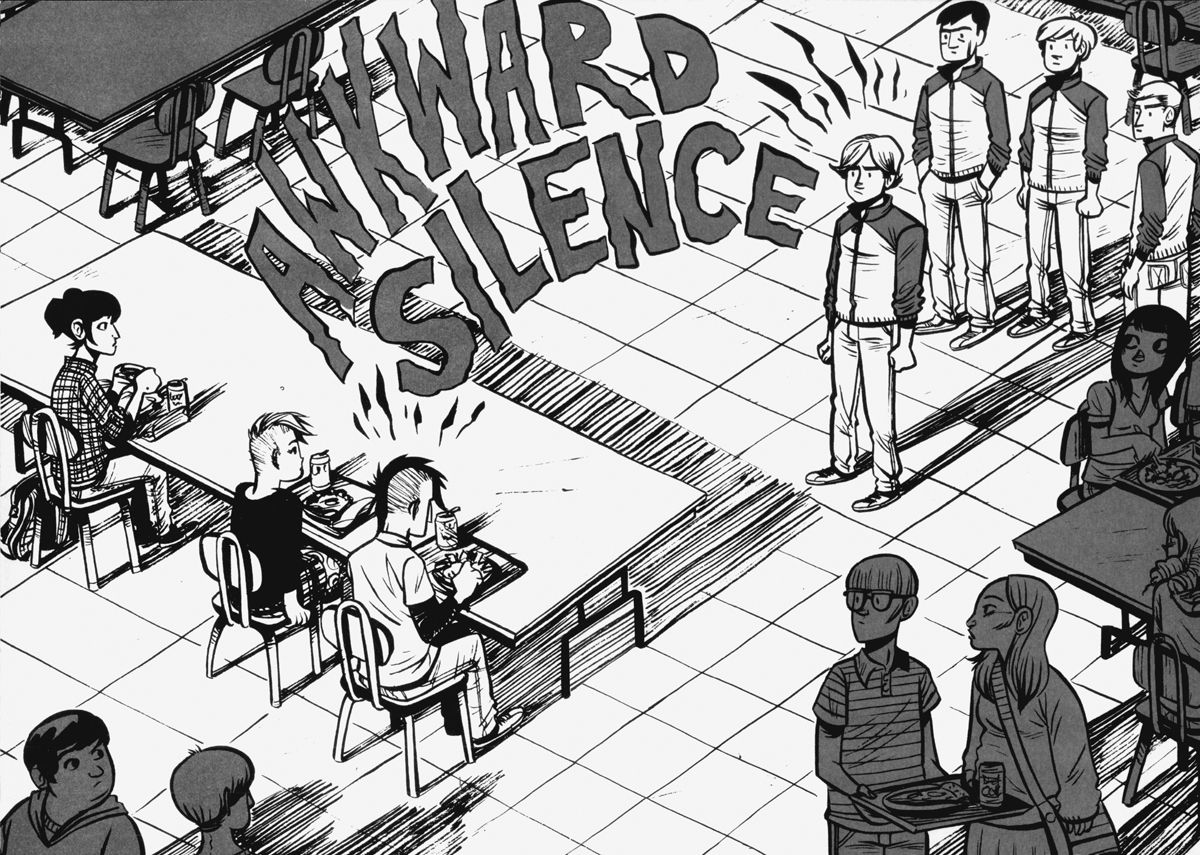
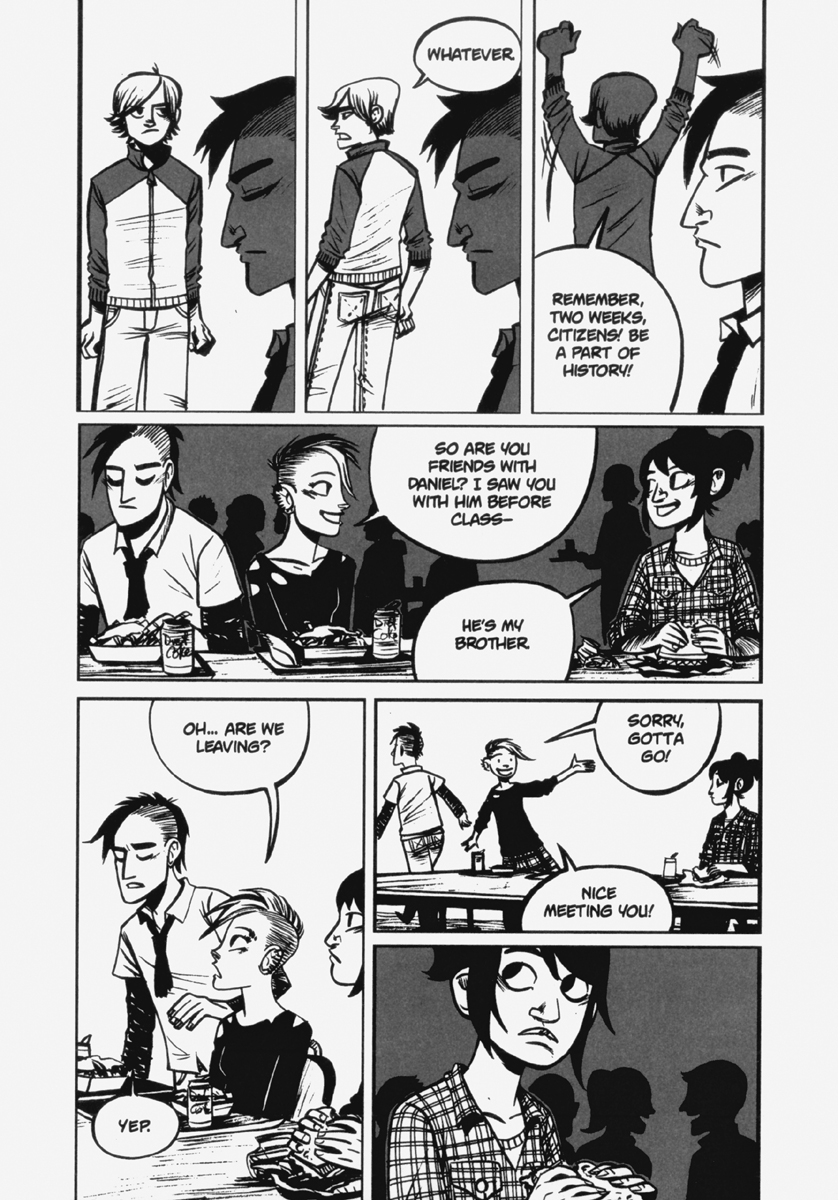

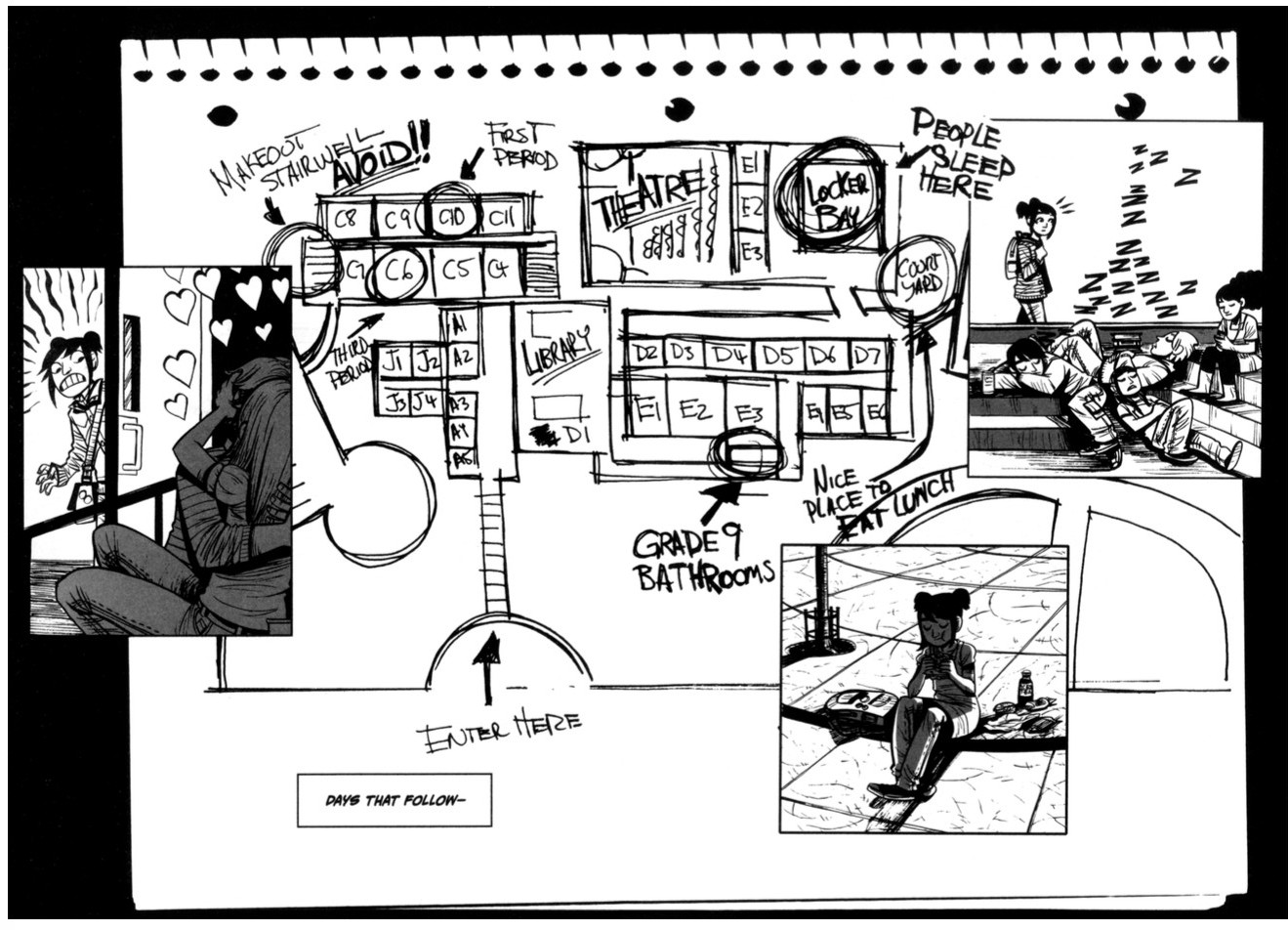
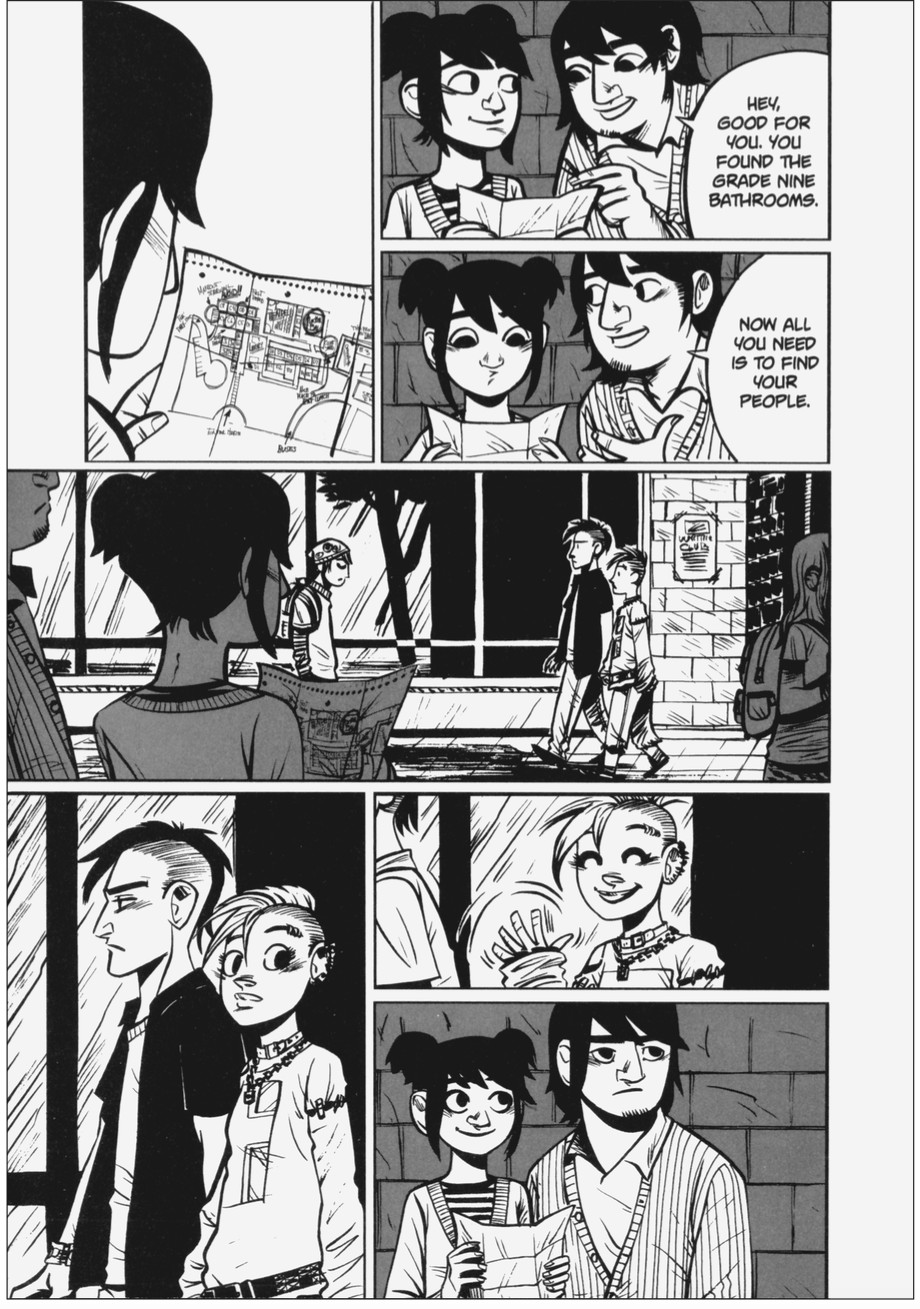
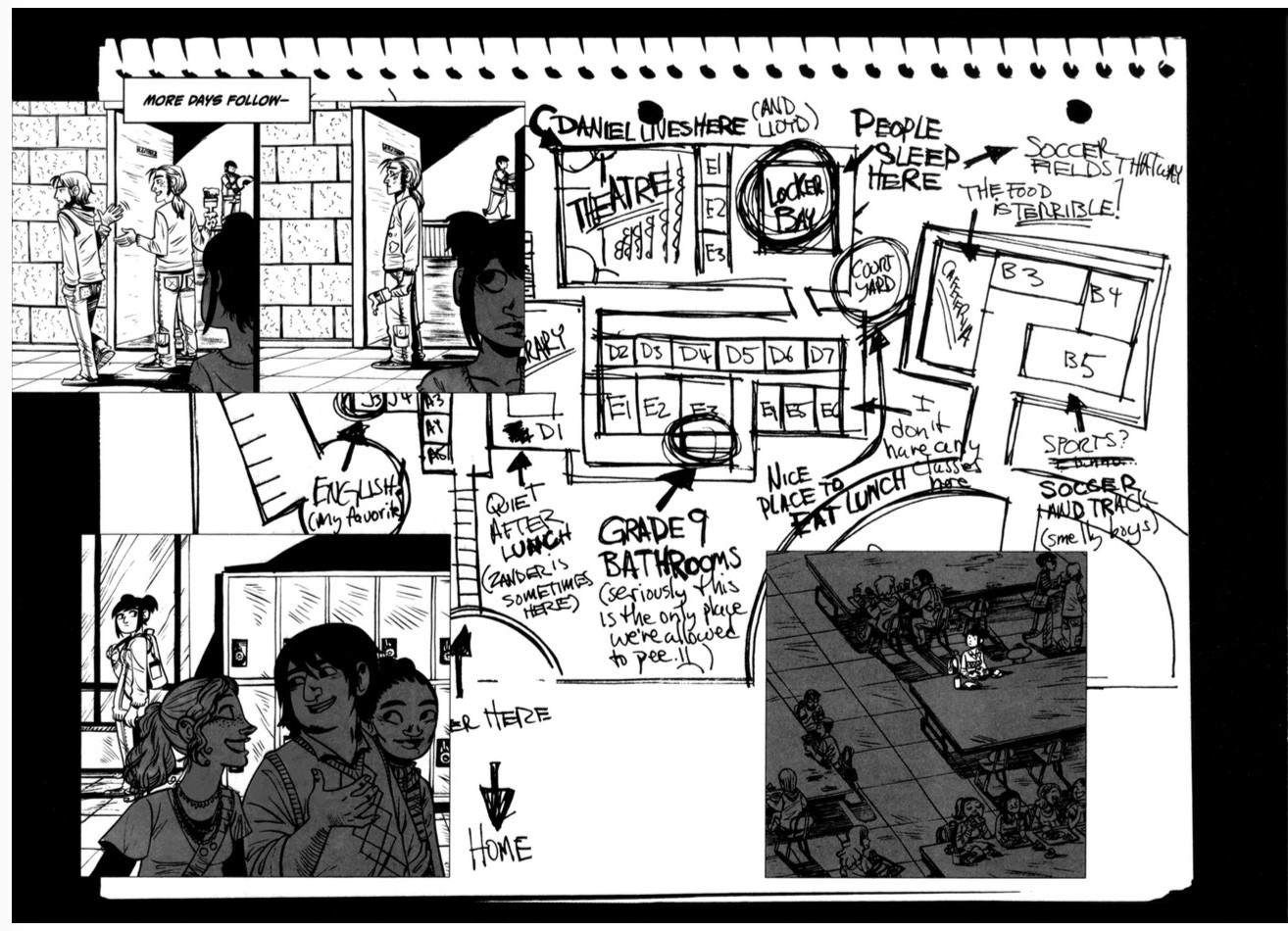
Understanding and Interpreting
What seems to be Maggie’s biggest fear about attending high school outside her home environment? Is this a reasonable fear, or is she being overly cautious? Explain.
Maggie talks about her first day of school as a “rite of passage” (p. 193), an event which is normally considered to be a transition between significant stages in one’s life. Looking carefully at all of the panels after she is first on her own, describe at least three rites of passage that Maggie faces on her first day. Does she overcome these challenges or not? Explain.
How would you characterize the relationship that Maggie has with her brothers? What textual and visual evidence can you use to support your response?
Look back at the two maps that Maggie draws to help her navigate both the building and the social environment of the school. First, what do the places that she chooses to identify reveal about her as a character and her attempts to understand school? Second, what does she add to the second map and what does this show about her development at school?
Analyzing Language, Style, and Structure
The first four pages of this piece have no dialogue at all. What does this reveal about Maggie’s character and her surroundings?
Throughout the excerpt, there are a number of panels in which there is no dialogue and author Faith Erin Hicks relies on the expressions of the characters to suggest specific ideas about school. Select one panel in which there is no dialogue, and write dialogue that would be appropriate for the scene. The dialogue can be either the thoughts of a single character or a discussion between characters. Explain why you chose that dialogue and how the added dialogue affects the meaning of the scene.
Look closely at the panels that show the two boys in the cafeteria (pp. 199–201). The author does not provide much context for the conflict: we don’t really know who the boys are or why they are fighting. In other words, we are just like Maggie, who is watching from the side. What strategies does Hicks use—
lines, shading, framing, angles, text, or other tools of the comic book artist— to portray this conflict? What does Hicks do artistically to establish Maggie as an outcast on her first day of school?
How does the author distinguish flashbacks from the present? What do the flashbacks reveal about Maggie?
Connecting, Arguing, and Extending
Select a panel in which you can closely identify with what a character is experiencing. This can be any character in the selection. Discuss the visual cues Faith Erin Hicks uses to bring that experience to life, and then compare and contrast your experience to what the character is going through. If you were to draw a panel of a similar experience from your life, what visual cues might you use to bring your story to life?
Look back at the two maps that Maggie draws to help her navigate her school. Create your own map for a section of your school and include labels and drawings relevant to your experiences.
Maggie’s experience shows a lot of the positives and negatives of both homeschooling and public schooling. Which one is more effective at educating students? Locate a research article or two about the benefits and challenges of homeschooling as compared to education in the public schools. How does each group of students perform? Why do some students and parents choose homeschool over traditional school settings?